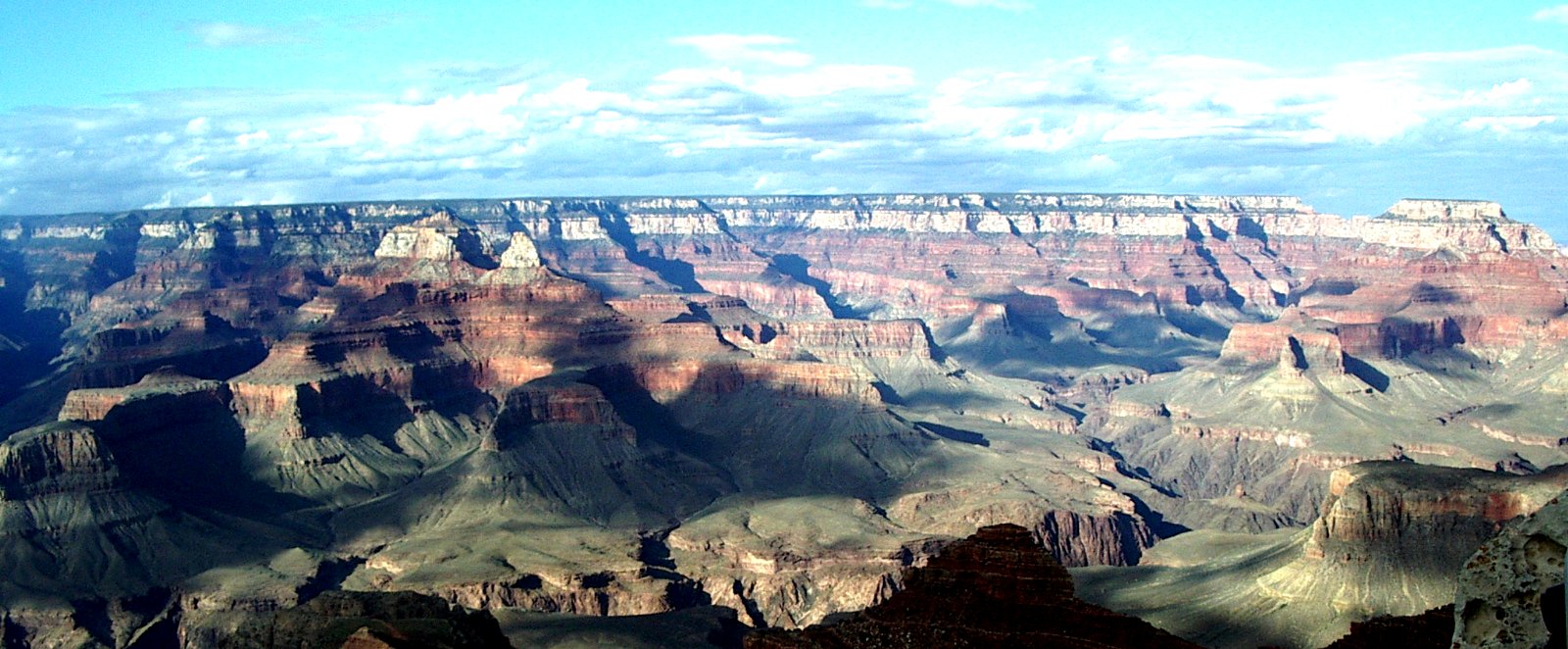Lab 7: Geological Time
Lab Structure
| Recommended additional work | None |
| Required materials | Pencil, ruler, spare piece of letter-sized paper |
Learning Objectives
By the end of this lab, you should be able to:
- Apply basic geological principles to the determination of the relative ages of rocks.
- Explain the difference between relative and absolute age determination techniques.
- Provide an overview of the history of the geological time scale, and explain the relationships between eons, eras, periods, and epochs.
- Understand the importance and significance of unconformities.
- Explain why an understanding of geological time is critical to both geologists and the general public.
- Construct a simple graphic log of a stratigraphic succession.
Key Terms
|
|
Time is the dimension that sets geology apart from most other sciences. Geological time is vast, and Earth has changed enough over that time that some of the rock types that formed in the past could not form today. Furthermore, as we’ve discussed in previous labs, even though most geological processes are very, very slow, the vast amount of time that has passed has allowed for the formation of extraordinary geological features, as shown in Figure 7.0.1.

There are numerous ways to measure geological time. We can determine the relative ages of rocks (for example, whether one rock is older than another) based on their spatial relationships; we can use fossils to constrain the approximate age of sedimentary rocks because we have a detailed record of the evolution of life on Earth; and we can use a range of isotopic techniques to determine the actual ages (in millions of years) of igneous and metamorphic rocks. We will explore the use of fossils in dating sedimentary rocks, and interpreting past changes in climate and depositional environment through geologic time in future geology courses.
But just because we can measure geological time doesn’t mean that we understand it. One of the biggest hurdles faced by geology students—and geologists as well—in mastering geology, is to really come to grips with the slow rates at which geological processes happen and the vast amount of time involved. The problem is that our lives are short and our memories are even shorter. Our experiences span only a few decades, so we really don’t have a way of knowing what 11,700 years means. What’s more, it’s hard for us to understand how 11,700 years differs from 65.5 million years, or even from 1.8 billion years. It’s not that we can’t comprehend what the numbers mean—we can all get that figured out with a bit of practice—but even if we do know the numerical meaning of 65.5 Ma, we can’t really appreciate how long ago it was.
You may be wondering why it’s so important to really “understand” geological time. One key reason is to fully appreciate how geological processes that seem impossibly slow can produce anything of consequence. For example, the slow movement of tectonic plates that over geological time can travel many thousands of kilometres!
One way to wrap your mind around geological time is to put it into the perspective of single year, because we all know how long it is from one birthday to the next. At that rate, each hour of the year is equivalent to approximately 500,000 years, and each day is equivalent to 12.5 million years. It’s worth repeating: on this time scale, the earliest ancestors of the animals and plants with which we are familiar did not appear on Earth until mid-November, the dinosaurs disappeared after Christmas, and most of Canada was periodically locked in ice from 6:30 to 11:59 p.m. on New Year’s Eve. As for people, the first to inhabit Alberta got here about one minute before midnight, and the first Europeans arrived about two seconds before midnight.
Media Attributions
- Figure 7.0.1: © Steven Earle. CC-BY-4.0.

